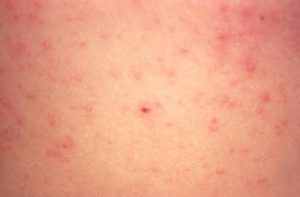According to the World Health Organization Regional Office for Europe, over 41,000 children and adults in the WHO European Region have been infected with measles in the first 6 months of 2018.

The total number for this period far exceeds the 12-month totals reported for every other year this decade. So far, the highest annual total for measles cases between 2010 and 2017 was 23,927 for 2017, and the lowest was 5273 for 2016. Monthly country reports also indicate that at least 37 people have died due to measles so far this year.
“Following the decade’s lowest number of cases in 2016, we are seeing a dramatic increase in infections and extended outbreaks,” says Dr Zsuzsanna Jakab, WHO Regional Director for Europe. “We call on all countries to immediately implement broad, context-appropriate measures to stop further spread of this disease. Good health for all starts with immunization, and as long as this disease is not eliminated we are failing to live up to our Sustainable Development Goal commitments.”
Seven countries in the Region have seen over 1000 infections in children and adults this year (France, Georgia, Greece, Italy, the Russian Federation, Serbia and Ukraine). Ukraine has been the hardest hit, with over 23,000 people affected; this accounts for over half of the regional total. Measles-related deaths have been reported in all of these countries, with Serbia reporting the highest number of 14.
- Measles in Ukraine: 755 additional cases reported in past week
- Serbia measles: 5,700 cases in 10 months
The measles virus is exceptionally contagious and spreads easily among susceptible individuals. To prevent outbreaks, at least 95% immunization coverage with 2 doses of measles-containing vaccine is needed every year in every community, as well as efforts to reach children, adolescents and adults who missed routine vaccination in the past.
While immunization coverage with 2 doses of measles-containing vaccine increased from 88% of eligible children in the Region in 2016 to 90% in 2017, large disparities at the local level persist: some communities report over 95% coverage, and others below 70%.
WHO is working closely with Member States currently facing outbreaks to implement response measures, including enhanced routine and supplemental immunization as well as heightened surveillance to quickly detect cases. WHO is also working with other countries to attain the 95% threshold.


